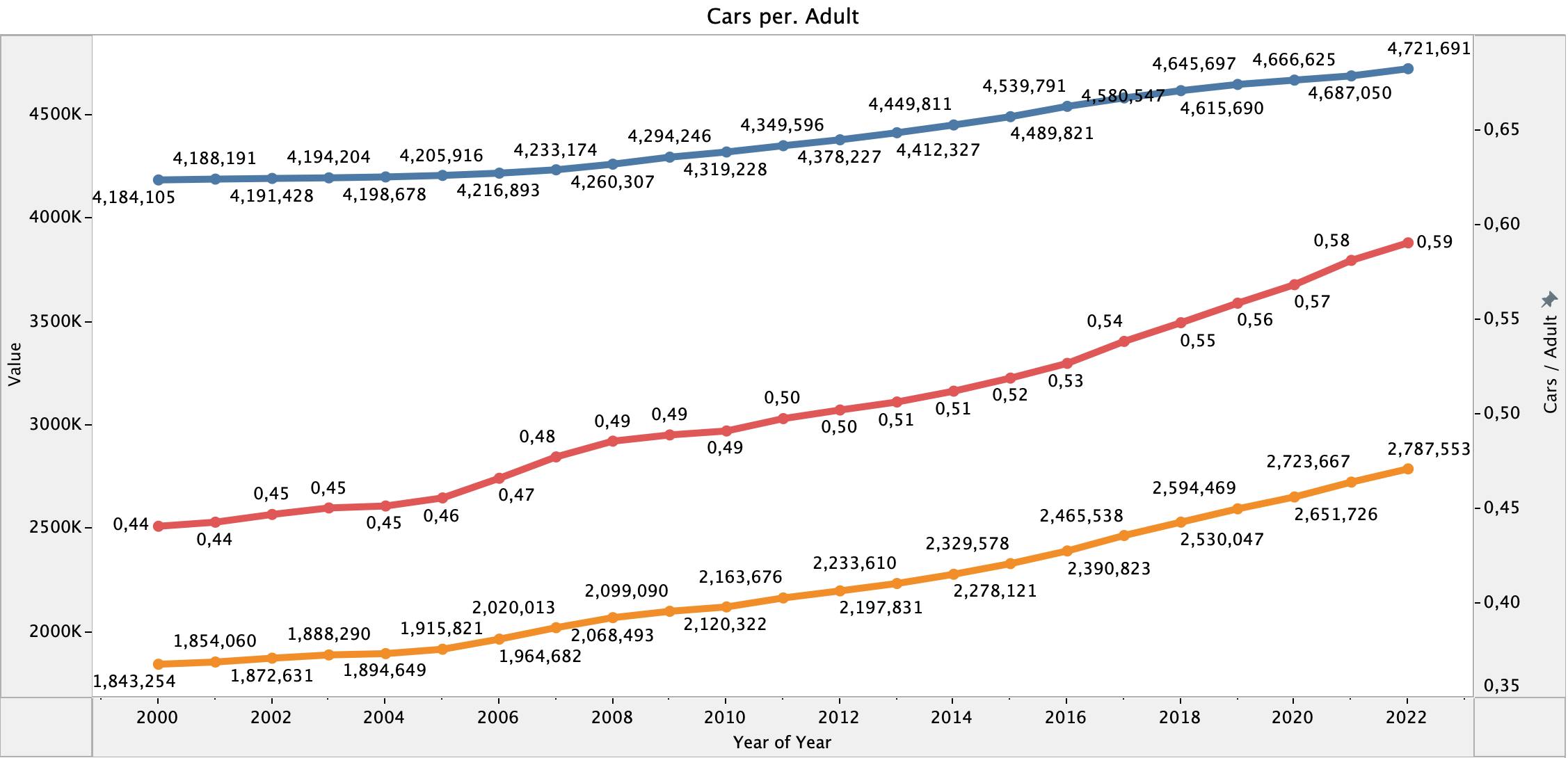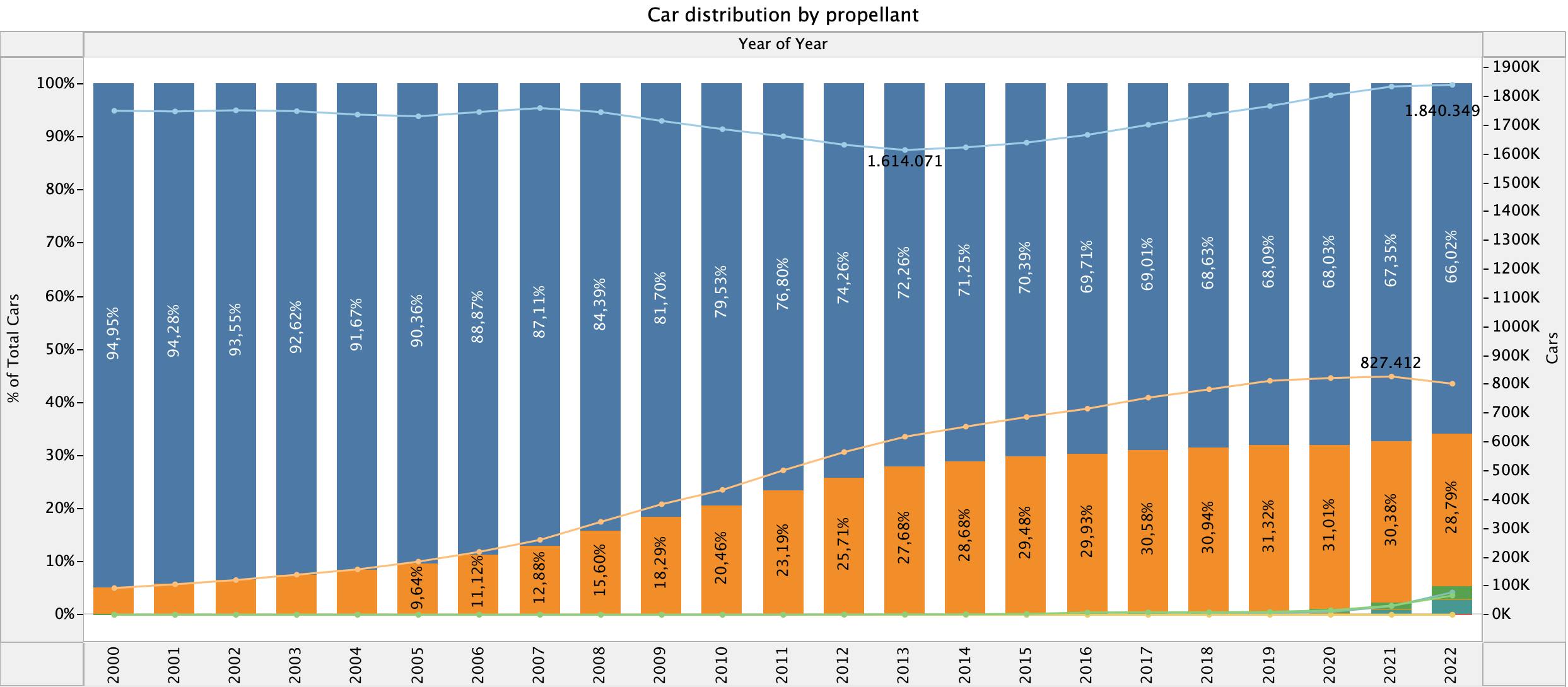How prevalent are electric cars actually in Denmark?
Car manufacturers are working hard to make their electric cars attractive to consumers. Let's see how popular they are among the Danish population.
In 2020 Denmark was the third most expensive country in the EU to buy a car. In pole position we have Switzerland followed by Norway. One reason is the income levels but also taxes play an essential role in the equation.
So to understand the car landscape in Denmark we need to know how the taxes work!
Background on car taxation in Denmark
Denmark is well known to be among the most heavily taxed countries in the world and when it comes to vehicles it is no different. For cars costing more than 197.700 kr. (28.000 USD) the tax is 150%.
If you buy a car with low CO2 emission, you will get a discount on the tax. This incentivizes green driving and pushes consumers towards wholly or partly electric vehicles.
Since car taxes are an essential source of income for the Danish society, the discount will gradually decrease on newly registered cars when we near 2030. So to get a good deal on one of the electric cars currently available consumers have to act fast.
Even though it is possible to obtain reasonable discounts on electric cars, the cars we have seen on the market up until now have been in the premium segment. Mainly available to the upper class and not accessible to the general population. For that reason, electric cars have not yet gained the popularity many had hoped for. But with many traditional car manufacturers, such as VW, Fiat, Toyota, Peugeot etc. introducing their electric- or hybrid cars, we are starting to see more price-friendly options on the market. The increased competition is good for the consumer in general, pushing down the prices and improving the overall quality of the products.
To put things in perspective, a Tesla Model S starts from 106.440 USD in the US, while at the time of this writing, the same car costs 135.405 USD in Denmark.
If you want to know more about car taxation in Denmark read more on FDM.dk (Danish Association for car owners).
Now it is time to look at some data to get an idea of how big the danish car market is. In this article, we will only consider vehicles owned by private households.
How big is the car market in Denmark?
In Denmark, you need to be at least 18 years old to drive a car on your own. At the beginning of 22' there were 4.7 million adults over eighteen years old living in Denmark but I have not been able to find exact statistics on how many of them hold a driving license.
The newest data from Statistics Denmark (dst.dk) shows 2.787.553 registered cars in 2022, an increase of 56% from 2000. This year we have 0,59 car/adult, the same as 1,7 adults sharing each vehicle.
We crossed the magic mark of two adults per car in 2012.
 Blue line: inhabitants in Denmark above 18 years old (minimum driving age) Orange line: Number of privately owned cars Red line: Privately owned cars per. adult.
Blue line: inhabitants in Denmark above 18 years old (minimum driving age) Orange line: Number of privately owned cars Red line: Privately owned cars per. adult.
If the car trend had had had the same growth rate as the population, there would only have been 2,1 million cars driving on the danish roads. But cars are getting increasingly popular in the small country of Denmark even when we have one of the most well-functioning public transportation systems in the world.
But what about electric vehicles?
Yes i know. I promised you to write about electric vehicles like all other medias and blogs. So let us have a look at the distribution by fuel type.
First, take a look at the graph below !
Blue column is the share of privately owned cars running on petrol Orange column: share of diesel cars Green column: fully electric cars Turquoise column: hybrid cars (electricity + petrol or diesel).
Light blue line is the absolute number of cars driving on petrol. You've guessed it the orange line is the number of cars driving on diesel. The tiny green lines starting to rise in 2020 are variations of electric vehicles.

We will focus on the blue and orange lines for a while and start in the year 2000 when petrol cars dominated the private car market.
In the period from 2000 to 2007 the number of petrol cars was stable at approximatly 1.7 million cars. But we know from the previous graph that the total car market was growing in that period. So how did it grow? Yes, you are correct, diesel fueled cars became more and more popular and captured market share. From 2006 to 2019, the number of diesel cars almost grew linearly with ~47.000 cars/year and when petrol cars were at it's lowest there were 1.6 million cars on the streets.
Since many countries including Denmark are restricting Diesel cars from driving in populated areas, they are declining in popularity. Electric and hybrid vehicles are starting to show up in the statistics but still account for less than 5% of the market. Fully electric cars only have a market share of 2,4% in 2022.
Moving forward to what happened between 2020 and 2022 we see that the market share of petrol cars dropped by -3,1% from 68,1% to 66,0%. Diesel cars dropped from 31,0% to 28,8 which is -7,1%.
How will the future look?
It will take a lot of effort to kick petrol off the throne as the most popular propellant for privately owned cars. Diesel tried for more than two decades and did not succeed.
It will be interesting to see how the curve for electrified cars will look. I hope it will take a more exponential shape but it will most likely depend on how quickly the battery technology develops.
For now the EVs will only dominate the newspapers and not the roads with its five percent market share.

